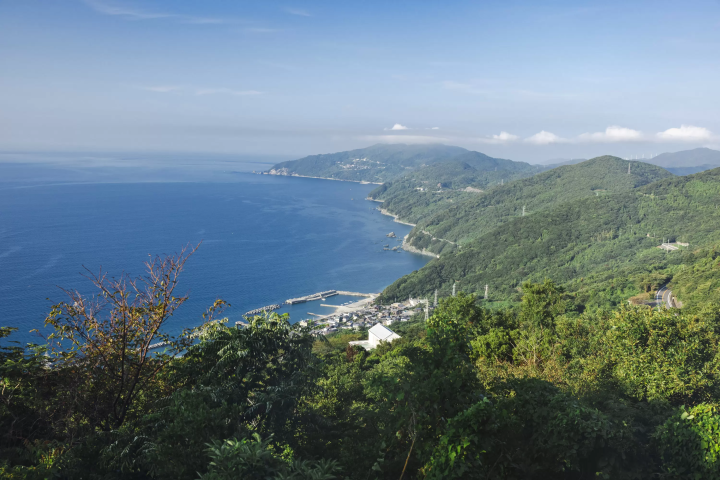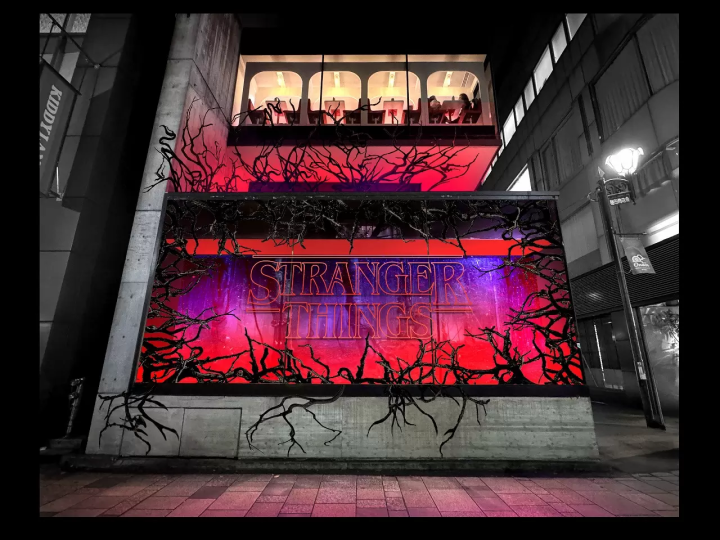Sadamisaki Peninsula: Adventure on Japan's Longest Peninsula.

The Sadamisaki Peninsula, a long, narrow strip of land jutting out into the Seto Inland Sea at the westernmost tip of Shikoku, is the longest and narrowest peninsula in Japan, stretching 50 kilometers into the sea. Filled with magnificent scenery and tranquility, the peninsula may not offer the thrills of the hustle and bustle of the city or the towering mountains, but it offers a delicate and satisfying adventure.
-
Table of Contents
- Geography, Geology, and History of Sadamisaki
- Day 1: Island Escapes and Mikan Farms
- Day 2: Fishing, Feasting, and Scenic Rides
- Day 3: Scenic Drives and Coastal Cuisine
- A Sustainable Adventure on Japan’s QuietPeninsula
Geography, Geology, and History of Sadamisaki
Sadamisaki’s geography is striking, to say the least. As Japan’s longest and narrowest peninsula, it stretches westward from Shikoku, cradling the Seto Inland Sea to the north and the Bungo Channel to the south. These two bodies of water, while separated by the slim peninsula, shape life on Sadamisaki in profound ways. To the north, the calm waters of the Seto Inland Sea make it a prime spot for fishing and transport. To the south, the often turbulent Bungo Channel has long been a challenge for sailors and a natural barrier to neighboring Kyushu.

Sadamisaki’s geography is striking, tosay the least. As Japan’s longest and narrowest peninsula, it stretcheswestward from Shikoku, cradling the SetoInland Sea to the north and the BungoChannel to the south. These two bodies of water, while separated by theslim peninsula, shape life on Sadamisaki in profound ways. To the north, thecalm waters of the Seto Inland Sea make it a prime spot for fishing andtransport. To the south, the often turbulent Bungo Channel has long been achallenge for sailors and a natural barrier to neighboring Kyushu.
The Sadamisaki peninsula consists ofcliffs and steep hillsides that plunge dramatically into the sea. This ruggedterrain creates some striking landscapes, from rocky beaches to steep bluffscovered in dense forests. The hills of Sadamisaki, while rugged, are notbarren; they have been cultivated for centuries, with terraced Mikan (Japanese mandarin orange)orchards climbing the slopes. These terraces are a testament to the ingenuityand resilience of the local farmers, who have transformed the landscape intoone of Japan’s most important citrus-growing regions.
Historically, Sadamisaki played a vital role as a maritime route between Shikokuand Kyushu. The Bungo Channel was akey passage for ships traveling between these two islands, and the smallfishing villages that dotted the peninsula provided safe harbors and tradingposts for merchants and sailors. Today, these fishing villages still exist,though the demands of modern life have changed the nature of their work. Manyvillages continue to thrive on fishing, particularly for local delicacies suchas Shirasu (baby sardines), abalone, and Horned turban shell , which are plentiful in the rich waterssurrounding the peninsula.
Please refer to the following for information on how to get to the Sada Misaki Peninsula.
Day 1: Island Escapes and Mikan Farms
Your adventure begins at Ikata Port, where a small boat awaitsto take you across the shimmering waters to Kuroshima Island, a small, uninhabited island just a short distancefrom the mainland. The boat ride is peaceful, offering a chance to soak in thescenery of the Sadamisaki Peninsulafrom a new perspective. As the boat sets out you’ll see the coastline of thepeninsula with its beautiful terraced orange farms decorating the hillsides,gliding through the calm waters past the fish farms and heading out to sea youwill eventually reach the shores and pebbled beaches of Kuroshima.
Once ashore, the island offers a sense ofsolitude and peace. With no inhabitants and minimal human development,Kuroshima feels like a place frozen in time. A walk along its beach is a chanceto connect with nature at its most untouched. The beach is quiet, the sandcrunching beneath your feet as you take in the fresh sea air. While Kuroshimamay be small, it provides a perfect opportunity to unwind and appreciate thenatural beauty of the region in its rawest form.

After lunch, it’s time to head inland to Nada Mikan Farm, one of the many Mikan orchards that dot the hills ofSadamisaki. Nada Mikan Farm is afamily-run operation, with multiple generations of farmers working the land toproduce some of Japan’s finest citrus fruits. As you tour the orchard, you’lllearn about the unique climate and conditions that make this region ideal forgrowing Mikan. The warm sea breezes, and ample sunlight create the perfectenvironment for these sweet, juicy oranges.

At the farm, you’ll get hands-onexperience harvesting Mikan directly from the trees. The process of picking thefruit is simple but rewarding, and you’ll come away with a deeper appreciationfor the hard work that goes into cultivating this iconic Japanese fruit. Afterthe harvest, you’ll enjoy a tasting of Nada’sMikan juice, which comes in a variety of flavors depending on the specificvariety of Mikan used. Each juice has its own unique balance of sweetness andacidity, and the tasting is a delicious way to cap off your visit to the farm.

In the evening, you’ll head to Kamegaike Onsen, a small local hotspring newly rebuilt after being destroyed in a lighting strike a few yearsback. The waters of the onsen are rich in minerals, making it the perfect placeto relax after a day of exploration. As you soak in the warm waters, you’ll beable to unwind and reflect on the beauty of Sadamisaki.
Dinner at the onsen’s restaurant featuresUwajima-style Tai Meshi, a localdelicacy that showcases the region’s freshsea bream. The dish consists of sea bream served over rice, with a raw eggand dashi broth mixed together using your chopsticks and then poured over thetop. The simplicity of the dish allows the freshness of the fish to shine, andit’s a perfect example of how the local cuisine highlights the natural flavorsof the region.

Day 2: Fishing, Feasting, and Scenic Rides
On day two, the adventure continues withan early morning fishing trip from KamagiFishing Port. Here, you’ll board a small fishing boat with a group of localfishermen, heading out into the deep waters of the Seto Inland Sea. The sea is calm in the early morning, the sun juststarting to rise over the horizon as the boat glides across the water. Usingradar to locate schools of fish, the fishermen guide you through the process ofdropping lines into the water—some up to 70 meters deep.

Fishing in Sadamisaki is both a challengeand a reward. The thrill of feeling the tug of a fish on the line is matchedonly by the satisfaction of pulling in your catch, which might include Kasago, a marbled rockfish prized forits delicate flavor and firm texture. The local fishermen are skilled andpatient, and they’re more than happy to share their knowledge and expertisewith visitors.During your fishing experience you may even be lucky enough to witness localdivers collecting fresh abalone and ‘Sazae’ horned turban shells from thewaters off the coast.


After lunch, the pace slows down with aleisurely e-bike ride along thepeninsula’s scenic roads. Your destination is the Kaze-no-oka Wind Park, a sprawling area dotted with wind turbines that generate renewableenergy for the region. The ride to the park offers stunning views of thesurrounding seas and hills, and it’s a perfect way to experience thepeninsula’s commitment to sustainability.The wind park itself is a testament to the region’s efforts to balance development with environmental preservation,and the view from the top is one of the best on the peninsula. On clear days,you can see all the way back to Shikoku,and at certain points along the ridge, you can watch both the sunrise and sunset.
After taking in the views, you’ll makeyour way to the Gongen Observatory,which provides another breathtaking vantage point. The observatory overlooksboth the Seto Inland Sea and the Bungo Channel, offering panoramic viewsof the entire peninsula. It’s a peaceful spot, perfect for taking a moment toappreciate the beauty of Sadamisaki before heading back to Seto Agritopia forthe night.
Day 3: Scenic Drives and Coastal Cuisine
The final day of your adventure beginswith a scenic drive to the tip ofthe peninsula, where the SadamisakiLighthouse stands sentinel over the waters of the Bungo Channel. The drive itself is an adventure, with the roadhugging the cliffs and offering dramatic views of the sea below. Along the way,you’ll stop at the Mizujiri ObservationDeck, located within SetonaikaiNational Park. This vantage point provides a sweeping view of the Seto Inland Sea, with its countlessislands dotting the horizon like stepping stones across the water.
At the end of the peninsula, the Sadamisaki Lighthouse awaits. Built inthe late 19th century, the lighthouse stands as a reminder of the region’smaritime history. From the MizujiriObservation Deck, you can gaze out over the Bungo Channel witha view ofthe lighthouse and, on clear days, catch glimpses of Kyushu across the water. It’s a breathtaking spot that offers asense of the isolation and beauty of this remote part of Japan.

After enjoying this breathtaking view,you’ll begin your journey back along the peninsula, stopping at Michi-no-Eki Ikata Kirarakan, a localroadside market that specializes in the region’s best products. Here, you canfind a variety of Mikan-based products,from fresh juice to cookies and mikan daifuku, as well as other localdelicacies like chestnut Shochu and Jako Katsu—a deep-fried fish cake madefrom locally caught fish. It’s the perfect place to pick up souvenirs thatreflect the flavors and traditions of Sadamisaki.
For lunch, you’ll head to Kijima Suisan, a restaurant known forits Shirasu don. The dish is simpleyet incredibly fresh: a bowl of rice topped with Shirasu (baby sardines) that have been freshly boiled. Theall-you-can-eat option allows you to fully indulge in this local delicacy,savoring the sweet, briny flavor of the Shirasu,which is caught just off the coast.
As you finish your meal and prepare toleave the peninsula, you’ll carry with you memories of a place where nature, culture, and sustainabilitycome together in perfect harmony. Sadamisaki may not be as famous as otherparts of Japan, but for those who seek adventure off the beaten path, it offersa chance to slow down, connect with the natural world, and appreciate thesimple, enduring beauty of life on this quiet peninsula.

A Sustainable Adventure on Japan’s QuietPeninsula
At the heart of the Sadamisaki Peninsula is a commitment to sustainability and localculture. The terraced Mikan orchards,the renewable energy wind parks, andthe traditional fishing methods allspeak to a way of life that is deeply connected to the land and sea. Thepeninsula’s isolation has helped preserve these traditions, and for travelers,it offers a unique opportunity to experience a part of Japan that is bothtimeless and forward-thinking.
Whether you’re reeling in a catch from the Seto Inland Sea, tasting the fresh sweetness of a sun-ripened Mikan, or watching the wind turbinesturn slowly against the backdrop of a brilliant sunset, Sadamisaki invites youto experience a quieter, more intentional form of travel. Here, you won’t findthe frenetic energy of the city or the well-worn paths of mass tourism.Instead, you’ll find a place where nature,tradition, and innovation come together to create a unique adventure—a placewhere you can truly reconnect with the world around you.
The Sadamisaki Peninsula, known as the longest and narrowest peninsula in Japan, was once called an "island on land." We will develop adventure tourism content that utilizes the scenic beauty nurtured by Mother Nature and the untouched natural environment, and then turn it into products.
The contents on this page may partially contain automatic translation.




























![[Wakayama Sign] Plums and plum wine](https://resources.matcha-jp.com/resize/720x2000/2025/12/08-252248.webp)

![[2025 Update] Introducing free Wi-Fi spots in Tokoname City , Aichi Prefecture](https://resources.matcha-jp.com/resize/720x2000/2025/12/16-253074.webp)

